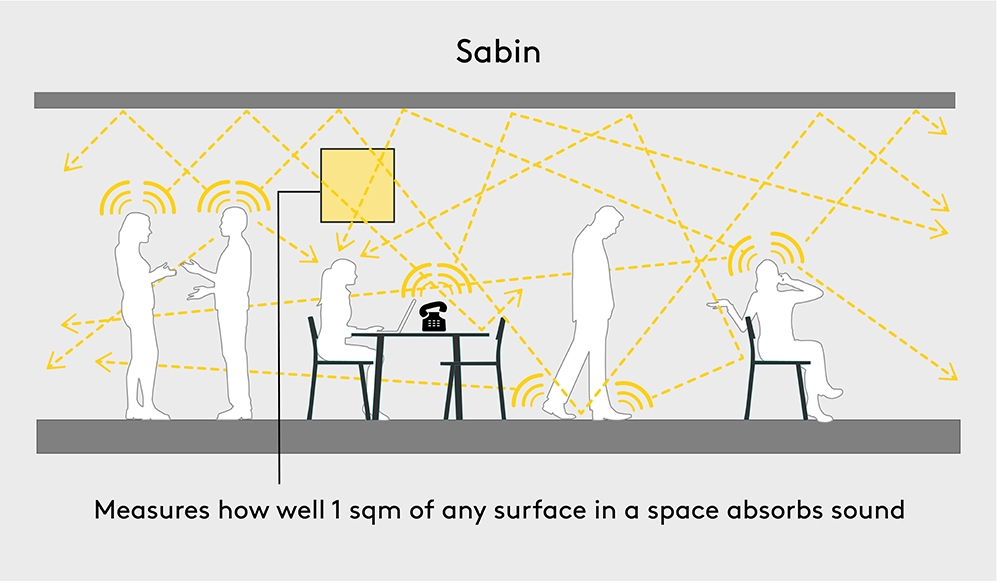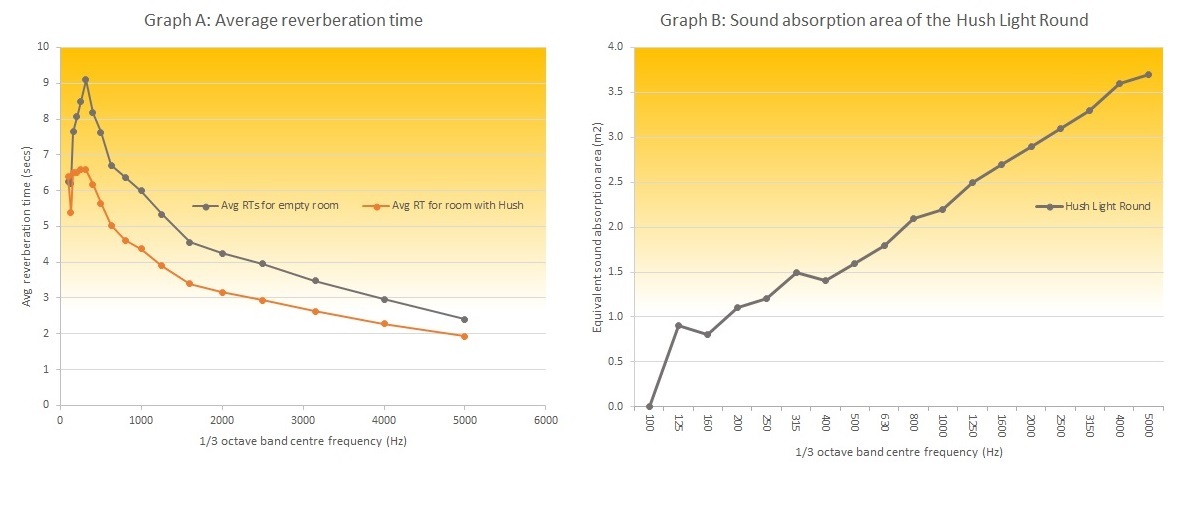Noisy interiors are bad for our productivity and our wellbeing. Here's the proof that Hush acoustic lights can help.
acoustics
Hush acoustic lights - the test results are in
Acoustics matter
Acoustic stress is real and it's measurable
Studies now prove that exposure to noise in the workplace can negatively affect our health and well being in a number of ways. Background noise levels and inappropriate reverberation times (more below) in a space can affect speech intelligibility and distract us from tasks. It's hard to be productive in this type of environment.
Design professionals are starting to take this issue more seriously. The WELL Building standards now include an entire section on sound that outlines an approach to addressing the concerns of acoustical comfort using research-based design considerations. The ultimate aim is to improve occupant health and wellbeing in buildings.
There are solutions
This is welcome news, as so many commercial spaces these days are housed in environments with multiple hard surfaces: concrete floors and walls, exposed ceilings, large expanses of glass. Sound reverberates easily off these surfaces and creates an uncomfortable acoustic environment.
Rooms, such as the one pictured, benefit greatly from acoustic treatment that makes them more comfortable for the occupants. Fortunately there are solutions that allow both existing spaces and those on the drawing board to be fitted for better sound quality.
The science behind Hush lights
We carried out independent scientific tests to find out how effective the Hush acoustic light is at improving sound quality in a space. Tests were conducted to ISO 354:2005 standards in a controlled environment by qualified industry experts at the University of Canterbury. This standard describes methods for measuring the absorption of sound by single objects, such as the Hush acoustic light. This is measured across different sound frequencies.
How does Hush affect sound quality in a space?
Tests were designed to measure the amount of sound that is absorbed (as opposed to reflected) by the Hush acoustic light fixture, per m2. Sound is vibration, therefore when it meets a hard surface it is reflected back unless absorbed by a soft surface such as the fibrous acoustic material of the Hush light.
When sound is absorbed the overall sound quality in the room improves.
How can we measure sound absorption?
Noise Reduction Coefficient (NRC) is often cited as a measure of how well a surface absorbs sound. NRC measures how much sound is absorbed as opposed to reflected by a surface. However Sabin is a better measure, as it takes into account all surfaces in the space and measures how well sound is actually absorbed in a given square metre of space. Because Sabins are additive, you can measure the impact of all acoustic treatments in an area on the sound quality in that space.
We use Sabin as a measure in our tests as it is a much more comprehensive measure than NRC.

How can we stop sound reflecting in the room?
The test also measured the amount of time it took for a sound to die away within the room. Called reverberation time (RT), this measures the amount of time after the sound source has been shut off that the sound reverberates in the room before disappearing. The WELL Building standards state that RT(60) should be around 0.6 seconds. the following test reports show how favourably Hush performed.
Why test?
If we can control the parameters relating to sound absorption and reverberation time, we can create a more comfortable acoustic environment for the people occupying the space. Tests can tell us whether Hush can effectively be used to do this. We publish the acoustic reports for our Hush lights to explain their effectiveness.
Hush pictured being used by client West Carr Harvey (fit out by Eastern Commercial Furniture) to mitigate sound reverberation.
The test results
The following graphs show the results of the testing:
Graph A shows that the Hush light more effectively absorbs sound and reduces the reverberation time in the room, as compared to the room without Hush. This is in line with WELL Building Standards.
Where there is less sound reverberation, there is a lower level of background noise and a more controlled acoustic environment.
Graph B shows the ability of Hush to absorb sound (per square metre of sound absorption area, i.e. the level of Sabin) is at its strongest and most effective in the medium frequencies which is the frequency of human speech and of many of the common sounds in an office environment.

The benefits of Hush lights
- Increase speech and listening comfort by reducing the reverberation time of sound in the space
- Reduce the amount of vocal effort required for communication - less need to raise your voice to be heard
- Decrease distracting noise levels and help to lessen any associated stress-related symptoms
- Make it easier to concentrate by reducing distracting noises
Hush is not designed to eliminate all noise, as this is not desirable in a workplace environment (no one wants to be able to "hear a pin drop"). Instead it's about managing intelligibility and audibility. The key purpose is to localise and clarify sound sources and reduce the impact of noise distractions.
Why Hush?
Hush is a cost effective, multi-purpose choice
Hush is flat-packed, can be easily installed by a registered electrician and does not require a builder nor do occupants need to move out of the space for alterations. The cost of Hush is substantially less than that of installing acoustic wall or ceiling panels, and Hush also provides illumination for a space with either E26 or LED lamp options. A hood-only option is available for those who do not need lighting.
Hush improves acoustics and acoustics matter
Pictured is the Hush oval acoustic light at Shopify, Ottawa
“We wanted a lighting fixture that combined sound and lighting properties but with a cool aesthetic. HUSH was the perfect solution.”- Josee Anne Pronovos, Lead Architect, Linebox.
Credits
Photography:
Arlington Research (busy office image)
Drew Beamer, Unsplash (meeting room image)
Union Eleven Photography (Shopify)
Catherine Hugo (Young Shand)
Graphics: Catherine Hugo
